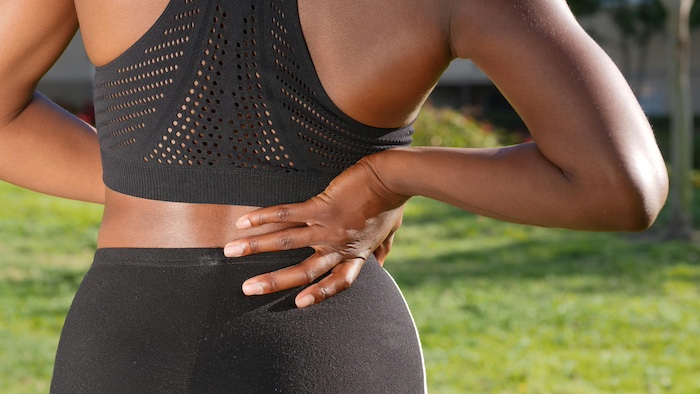
Treatment for low back muscle strain is typically simple and only needed for a short time. A long-term exercise program, or ergonomic or sports modifications, may also be recommended.
Aggressive chiropractic manipulation should be avoided at the onset of treatment. It is best to restore health gradually and diligently, watching for worsening symptoms versus improvement.
Ultimately, the severity of a muscle injury will determine what kind of treatment is necessary.
Initial Treatments for Low Back Muscle Strain
Most cases of a pulled back muscle are treated using standard self-care or non-invasive treatments. Some typical first-step treatments for a pulled low back muscle include:
Anti-inflammatory medicines (NSAIDs)
Ibuprofen, aspirin, and naproxen reduce inflammation, often contributing to pain. Anti-inflammatory medicines are available over-the-counter or with a prescription.
Over-the-counter pain medicines
Acetaminophen minimizes pain by interfering with the way the brain interprets pain signals. Acetaminophen may also be included as an active ingredient in prescription medications, such as in combination with an opioid.
Muscle relaxants
Muscle relaxants may be prescribed on a short-term basis to reduce muscle spasms. Most muscle relaxants do not affect muscles directly but rather dampen pain receptors in the central nervous system. These medications have many side effects, and muscle relaxants also carry the risk of addiction.
Ice packs
Ice packs work by reducing inflammation that can occur shortly after a muscle is injured. Typical recommendations include applying a cold or ice pack for 10 - 20 minutes at regular intervals throughout the day and using a towel or other barrier between the ice and the skin to prevent an ice burn.
Heat packs
Heat packs increase circulation, which improves healing and relieves tension in strained muscles. As a general rule, heat therapy is usually recommended starting about 48 hours after the injury occurs. A layer should be kept between the heat pack and the skin to avoid a burn. Applying heat before changing positions or starting an activity can help ease pain related to movement. For example, using a heating pad on the lower back for 10 minutes before getting out of bed in the morning can alleviate stiffness.
Massage therapy
Massage increases circulation and relaxes muscles, improving the range of motion and decreasing pain. Massage therapy also releases endorphins, which lessen pain signals in the nervous system. Neuromuscular massage is considered especially helpful for low back muscle pain.
Walking
Staying active during the day is important to keep the spinal structures functional and healthy. Even short, frequent walks can be helpful—walking for 3 to 5 minutes several times a day can help relieve low back stiffness, and in the process, reduce discomfort and pain.
Activity modification
Avoiding strenuous activity or heavy lifting when low back pain is intense, can help prevent worsening a muscle injury and low back pain. In some cases, a short rest period may be advised; it is best to limit rest to one or two days, as underusing muscles causes deconditioning and stiffness over time.
The above is not a complete list. Many more pain relief options are available, such as manual manipulation, acupuncture, and other medications (such as opioids).
All medications have side effects. For low-dose medications, such as over-the-counter pain relievers, side effects may not be noticeable. Other medications, such as muscle relaxants and opioid pain relievers, may cause drowsiness, dizziness or lightheadedness, nausea and/or vomiting, or other side effects. Muscle relaxants and opioid medications can be addictive, so it is important to take them as instructed to reduce the chances of addiction.
A low back strain may signal that the back muscles are deconditioned and unable to effectively support the spine and the weight of the upper body. Keeping the lower back muscles active through stretching and strengthening exercises can help reduce overall pain levels and prevent future flare-ups from occurring.
Precision Pain Care and Rehabilitation has two convenient locations in Richmond Hill – Queens, and New Hyde Park – Long Island. Call the Queens office at (718) 215-1888 or (516) 419-4480 for the Long Island office to arrange an appointment with our Interventional Pain Management Specialists, Dr. Jeffrey Chacko or Dr. Sonny Ahluwalia.













